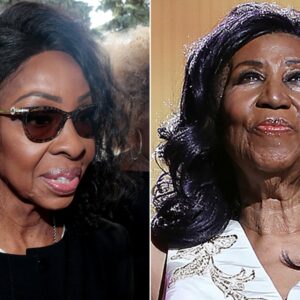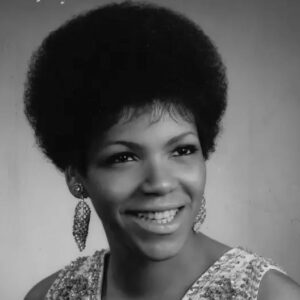Brad Pitt, a name synonymous with Hollywood success, has evolved from a talented actor into a cultural icon whose influence extends far beyond the silver screen. This article explores how Pitt’s diverse roles and public persona have shaped trends and societal norms, cementing his status as a symbol of cultural impact.
1. The Rise of Brad Pitt
Brad Pitt’s journey to fame began in the late 1980s, with television roles on shows such as Dallas and 21 Jump Street. However, it was his breakout performance in Thelma & Louise (1991) that truly established him as a rising star. Pitt’s portrayal of J.D., a charming drifter, captured the public’s imagination and set the stage for his future as a leading man. His early success was marked by an uncanny ability to portray a range of characters with depth and authenticity, paving the way for his ascent in Hollywood.
Pitt’s charisma and good looks were initially a large part of his appeal, but it was his choice of diverse and challenging roles that demonstrated his commitment to his craft. From a series of early roles that showcased his dramatic range to his transition into more complex and unconventional characters, Pitt’s career trajectory was defined by his willingness to take risks and push boundaries.
2. Iconic Roles and Cultural Impact
Brad Pitt’s career is distinguished by a series of iconic roles that have left a lasting impact on popular culture. His portrayal of Tyler Durden in Fight Club (1999) is one of his most memorable performances. The character challenged conventional notions of masculinity and consumerism. Pitt’s charismatic and enigmatic portrayal of Durden sparked significant conversations about identity, societal expectations, and the impact of consumer culture on individual self-perception. Fight Club became a cultural touchstone, influencing discussions about masculinity and modern life, and Pitt’s performance was integral to its success.
In Ocean’s Eleven (2001), Pitt played Rusty Ryan, a character whose effortless cool and slick demeanor added a new layer of charm to the ensemble cast. The film’s stylish portrayal of crime and teamwork, coupled with Pitt’s effortless charm, set trends in fashion and pop culture. The suave, sophisticated look of the characters influenced men’s fashion, particularly the resurgence of tailored suits and sleek, understated style.
Pitt’s role in Inglourious Basterds (2009) as Lieutenant Aldo Raine showcased his ability to blend humor with intensity, further solidifying his versatility as an actor. The film’s reimagining of World War II history through a blend of fiction and satire resonated with audiences, and Pitt’s performance contributed significantly to its critical and commercial success.
3. Public Image and Societal Norms
Beyond his film roles, Brad Pitt’s public image has played a significant role in shaping societal norms. Known for his philanthropic efforts, Pitt has been involved in various humanitarian causes. His work with the Make It Right Foundation, which aimed to rebuild homes in New Orleans following Hurricane Katrina, is a notable example of his commitment to social responsibility. Pitt’s involvement in this and other charitable initiatives reflects a broader cultural shift towards social awareness and activism.
Pitt’s advocacy for environmental causes is another aspect of his public image that has influenced societal attitudes. His involvement in projects promoting sustainable architecture and green living has contributed to a growing awareness of environmental issues. By using his platform to address these concerns, Pitt has helped to bring attention to important global challenges.
Moreover, Pitt’s personal life, often highlighted in the media, has influenced cultural perceptions of relationships and family dynamics. His high-profile relationships, including his marriage to Jennifer Aniston and later to Angelina Jolie, have been the subject of intense public scrutiny. These relationships, along with his role as a father, have shaped public perceptions of masculinity, family life, and celebrity culture.
4. The Evolution of Masculinity in Popular Culture
Brad Pitt’s career has mirrored the evolving concepts of masculinity in popular culture. In the 1990s, the ideal male image was often characterized by traditional notions of strength and stoicism. Pitt’s roles during this period, such as in Legends of the Fall (1994) and Seven (1995), showcased a blend of physical prowess and emotional depth, challenging the conventional standards of masculinity.
By the 2000s, Pitt’s roles continued to reflect the changing landscape of masculinity. His portrayal of complex, multifaceted characters in films like Troy (2004) and The Curious Case of Benjamin Button (2008) highlighted a more nuanced and emotionally intelligent version of masculinity. These roles demonstrated that vulnerability and sensitivity could coexist with traditional masculine traits, influencing how men were represented and perceived in media.
5. Influence on Fashion and Style
Brad Pitt’s impact on fashion and style is another aspect of his cultural influence. His on-screen persona, as well as his red carpet appearances, have made significant contributions to fashion trends. The tailored suits and casual yet refined style seen in Ocean’s Eleven became a benchmark for men’s fashion in the early 2000s.
Pitt’s personal style, characterized by a blend of ruggedness and sophistication, has also influenced fashion trends. His casual yet polished look, often featuring leather jackets, well-fitted jeans, and stylish sunglasses, has set trends and inspired countless imitators. Pitt’s ability to seamlessly blend high fashion with everyday wear has made him a style icon whose influence extends beyond the realm of cinema.
6. Brad Pitt and Hollywood’s Changing Landscape
Brad Pitt’s career also reflects the changing dynamics of Hollywood. As the industry has evolved, so too has Pitt’s approach to his work. His decision to co-found Plan B Entertainment with Jennifer Aniston and later with Angelina Jolie marked a significant shift in his career. The production company, which has been behind successful and critically acclaimed films like The Departed (2006) and 12 Years a Slave (2013), highlights Pitt’s commitment to producing high-quality, impactful cinema.
Plan B’s focus on socially relevant and diverse storytelling represents a broader trend in Hollywood towards more inclusive and thought-provoking content. Pitt’s involvement in producing films that tackle complex social issues underscores his role in shaping the future of the film industry.
7. Legacy and Cultural Significance
Brad Pitt’s legacy is marked by his contributions to both cinema and culture. His influence extends beyond his impressive filmography to his impact on societal norms, fashion, and Hollywood itself. As a cultural icon, Pitt has shaped how masculinity is portrayed, influenced fashion trends, and used his platform for philanthropic and environmental causes.
Pitt’s career has been characterized by a willingness to take risks and explore a range of characters, from the charming drifter to the complex antihero. His public image, marked by a blend of charisma, social responsibility, and personal vulnerability, has resonated with audiences and contributed to his status as a cultural icon.
In conclusion, Brad Pitt’s journey from a rising star to a symbol of cultural influence reflects his profound impact on modern society. Through his diverse roles, public image, and contributions to various causes, Pitt has redefined what it means to be a cultural icon. His legacy is a testament to the power of cinema and celebrity to shape and reflect societal values.





